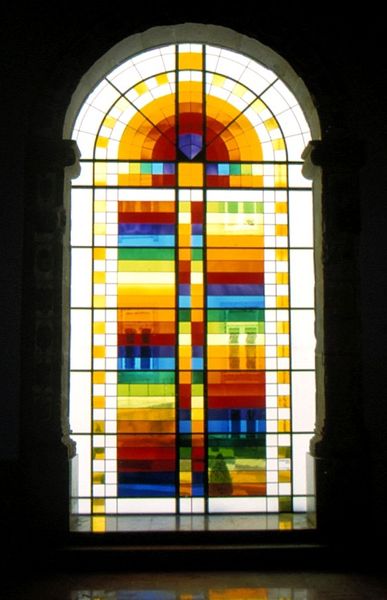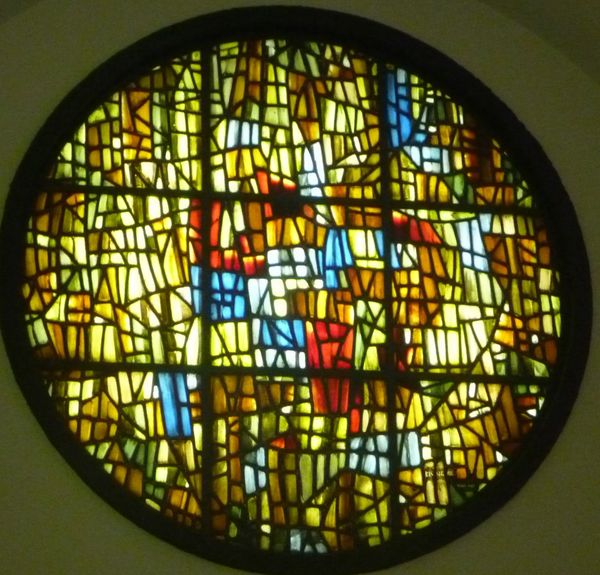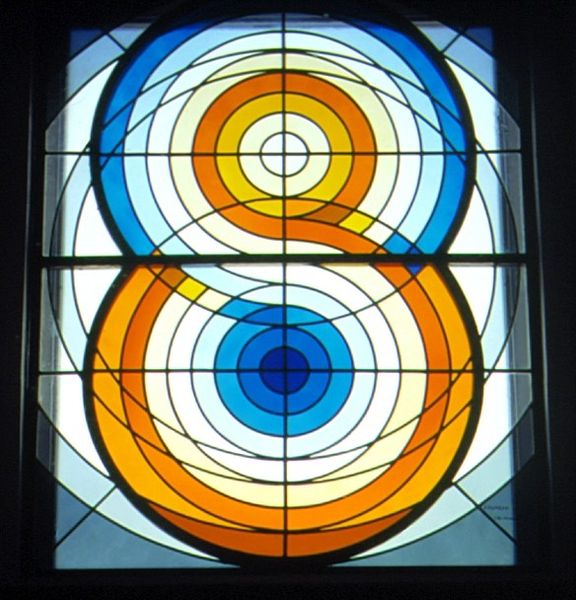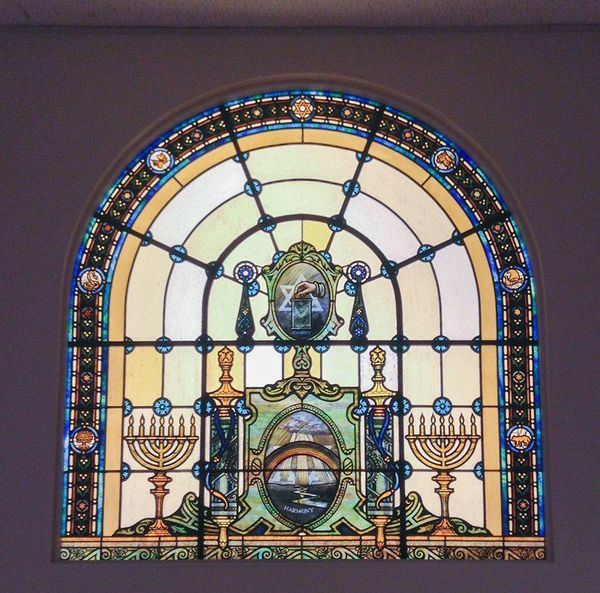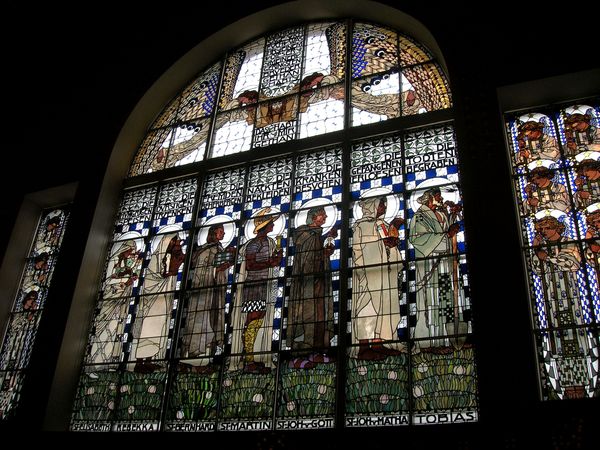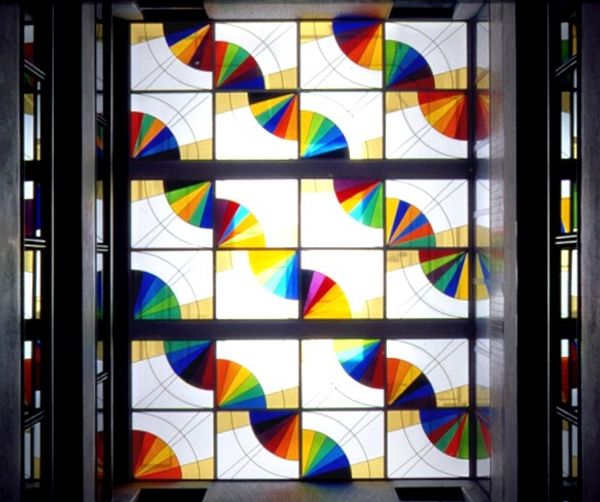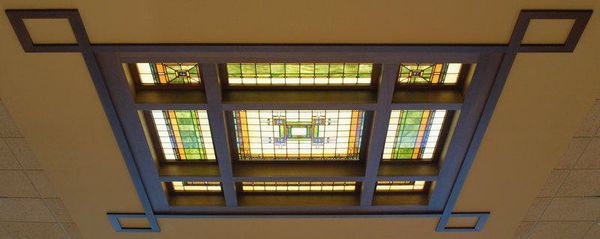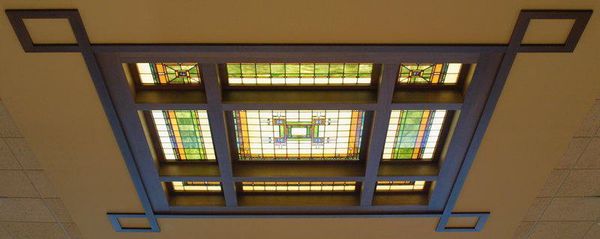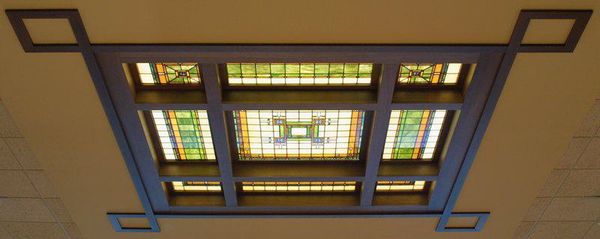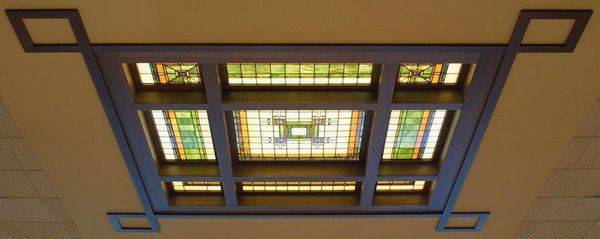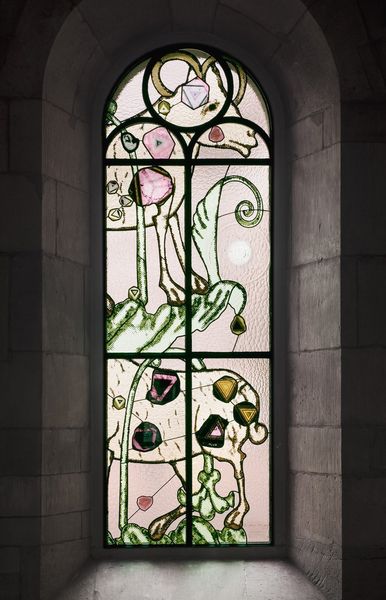
glass, site-specific, installation-art
#
geometric composition
#
glass
#
geometric
#
site-specific
#
installation-art
#
modernism
Copyright: Eduardo Nery,Fair Use
Curator: Looking at Igreja de S. Miguel, Queijas, created by Eduardo Nery in 1992, I’m immediately struck by the geometric shapes used in the design. What are your first impressions? Editor: It reminds me of sunlight filtering through a kaleidoscope. The circular pattern at the top, rendered in yellows and blues, immediately catches the eye, while the lower portion's grid creates an interesting interplay of light and shadow. It looks quite meticulously crafted. Curator: That's a keen observation. Considering the setting—a church—it prompts a question about spirituality and representation. Does the modernist geometry serve as a way to symbolize transcendence? How does it reflect religious experience within a contemporary framework? Editor: That’s an intriguing way to put it. To me, it feels more like a meditation on light itself, a natural phenomenon elevated by human artistry. Knowing it's made of glass underscores that, given its history and use in crafting optical tools. I'm curious about how the different colors were obtained and their effects on how natural light fills the space. Curator: Agreed. Beyond the immediate visual impact, the artwork speaks to shifting religious identities in the late 20th century. We could consider if geometric abstraction allowed the faithful to approach the divine without reliance on conventional, figurative symbols. It also subtly reflects a shift in the relationship between religious authority, architectural forms, and contemporary values during that era. Editor: So, in this context, Nery seems to propose a shift in how religious spaces could be designed. Thinking materially, there’s the craft. Glasswork is laborious, specialized labor. The work’s impact likely has to do with the workers, architects, commissioners and their understanding. And, how that understanding manifests for viewers in a shared, material-built setting such as a church. Curator: Ultimately, what we see is the result of a society, time and artistic perspective. Thinking beyond conventional art discourse, its placement as a religious object adds several more interpretive layers. Editor: Right, because seeing it here allows us to reflect not only on aesthetics, but on labor, faith, and how these factors impact perception itself.
Comments
No comments
Be the first to comment and join the conversation on the ultimate creative platform.
